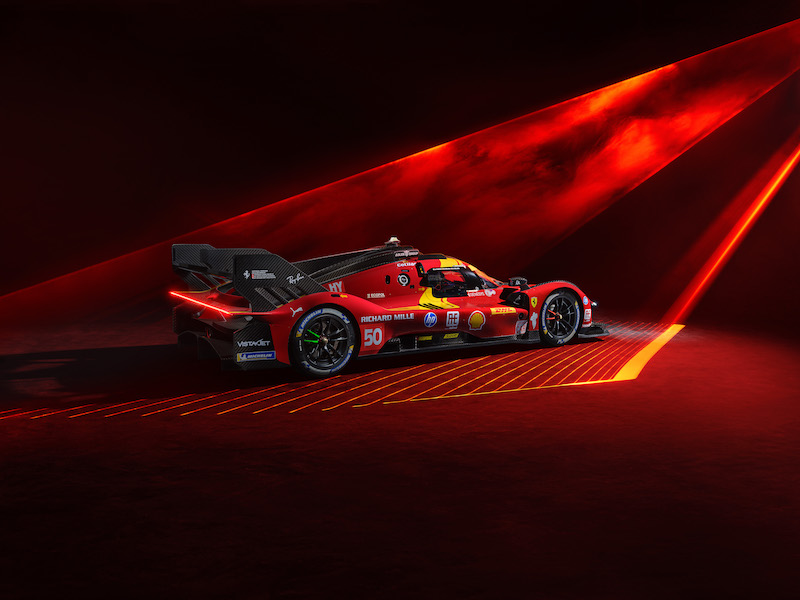Ferrari AF Corse is bringing a suite of reliability-focused updates and an updated livery design for its 499Ps to the FIA World Endurance Championship in 2025, as it looks to score a third consecutive win at Le Mans and claim its first Hypercar World Endurance manufacturers’ championship.
The factory cars will continue to race in red with yellow stripes, though the design and color tone have been tweaked for the brand’s third season in Hypercar.
The base red is darker than the shades used in 2023 and 2024 and gives the nod to a number of successful Ferrari race cars from the past. Meanwhile, yellow “Giallo Modena” stripes return to the cockpit, though this time they extend to the side pods rather than the lower section of the car’s side. The wrap also features “a glossy finish optimized for high car visibility, particularly at nighttime, with matte accents that align with Scuderia Ferrari’s Formula 1 design.”
Beneath the bodywork, the car has been tweaked, too. Following the introduction of a performance Joker mid-season in 2024, which featured a redesigned brake cooling duct system and, aerodynamically, the addition of flicks beneath the front headlights, Ferrari has gone further for 2025 with tweaks focused on durability.
“The car looks similar; there are no bodywork changes, no ‘Jokers’ in play for the season, but we spent the last half of the 2024 season and the winter working. We have improved the reliability side,” said Ferdinando Cannizzo, the head of endurance race cars at Ferrari.
“It was a big effort. There are several modifications under the skin that don’t count as Jokers. I would say 50 percent of the modifications have been made for reliability, a quarter related to new regulation updates like the position panel and the last quarter on interventions that we did for performance improvements that are not changes to the car, but a better interpretation of our car to exploit aero, tires and our potential.”
Over the past 12 months, Ferrari has tested the 499P at a range of circuits, most recently the Lusail Circuit in Qatar last month ahead of the season-opener, and completed around 15,000km over roughly 16 days. It’s an impressive total when the restrictions imposed on the Hypercar manufacturers by regulation are factored in.
Cannizzo explained that Ferrari pushed to maximize each day of track time to increase mileage. It did this by frequently running its test cars from 8 am to midnight instead of 9am to 5pm.
“For a good validation,” he continued. “Eight to 10 thousand (kilometers of track testing) is what you need to have a solution that’s properly validated. That’s the difficulty in developing something with such big restrictions on testing time.”

When asked by RACER for more detail on the areas that these evolutions target, Cannizzo said that “every area of the car has been impacted by modification.”